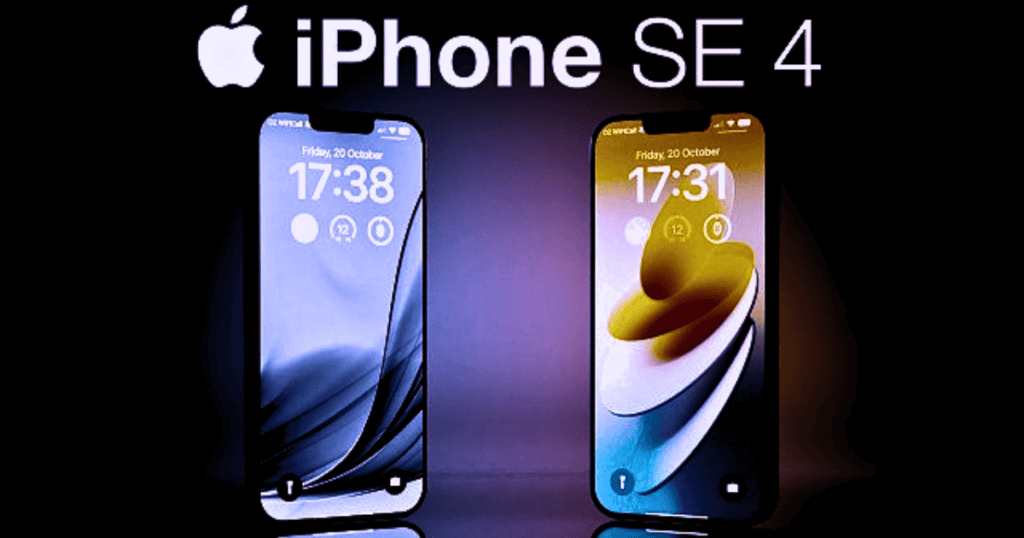You might find it intriguing that the new iPhone SE 4 has adopted the rear design of the iPhone 16, introducing a sleek, modern aesthetic that aligns with Apple’s current style. This shift not only enhances its visual appeal but also suggests potential improvements in its camera capabilities, echoing the features of its more expensive counterpart. As Apple targets budget-conscious consumers with this model, the implications for the smartphone market could be significant. But what does this mean for the future of Apple’s budget offerings?
iPhone SE 4 Chassis Overview
The iPhone SE 4 is set to feature a revamped chassis that closely resembles the iPhone 16, bringing a fresh look and improved functionality to this budget-friendly model. This design overhaul signals Apple’s commitment to modernizing the iPhone SE line while keeping it accessible.
- Flat Edges: Moving away from the rounded aesthetics of the iPhone 8 series, creating a more contemporary feel.
- Enhanced Production Efficiency: Aligns manufacturing processes with the iPhone 16, reducing costs and streamlining assembly.
- Upgraded Camera System: The new backplate design is expected to accommodate an upgraded camera system, mirroring the vertical camera layout found in the iPhone 16.
Similarities With iPhone 16 Design
Adopting the iPhone 16’s design elements, the iPhone SE 4 promises a modern aesthetic that enhances its appeal in the budget-friendly segment.
- Rear Chassis Design: Similar to the iPhone 16, marking a departure from the rounded edges of previous SE models.
- Vertical Camera Arrangement: Enhances photographic capabilities, making it a more competitive option in the smartphone market.
Impact on Production Efficiency
Shifting to the iPhone 16’s rear chassis design is set to boost production efficiency for the iPhone SE 4.
- Economies of Scale:
- Producing larger quantities of similar components reduces costs per unit.
- Standardized Parts:
- Simplifies the manufacturing process, minimizing complexity and decreasing overhead expenses.
- Redesigned Camera System:
- The potential redesign of the camera system to mirror the iPhone 16’s dual-camera layout enhances production efficiency, streamlining the assembly line and speeding up production times.
Expected Camera Upgrades
Rumors point to an exciting upgrade for the iPhone SE 4, featuring a dual-camera setup that significantly enhances its photographic capabilities.
- Dual-Camera System: Shift from a single-camera to a dual-camera system allows for capturing stunning photos with more depth and clarity.
- Vertical Camera Layout: Similar to the iPhone X, optimizing space for improved functionality.
- Improved Low-Light Performance: Enhanced capabilities for taking great shots in dim conditions.
- Telephoto Capabilities: Appeals to photography enthusiasts, offering more creative options for capturing distant subjects.
- Advanced Features: Potential support for Spatial Video for Vision Pro, further enhancing the photography experience.
Market Implications for Apple
Capitalizing on the iPhone 16’s design could empower Apple to enhance its market position by attracting budget-conscious consumers eager for advanced technology.
- Modernized SE Series: Integrating features typically reserved for pricier models, such as Face ID and a dual-camera system.
- Affordable Pricing: With a projected starting price below CAD $600, it offers an affordable alternative in a market with rising smartphone prices.
- Economies of Scale: Reduced manufacturing costs due to the alignment of production processes with the iPhone 16.
- Broader Audience Appeal: Appeals to consumers seeking budget-friendly options without sacrificing quality.
Comparison With iPhone 15
The iPhone SE 4’s design choices starkly contrast with the iPhone 15, particularly in features like camera setup and chassis design.
- Single vs. Dual-Camera System:
- iPhone SE 4 is expected to start with a single 48-megapixel camera, potentially upgrading to a dual setup.
- Flat Edges vs. Rounded Edges:
- The SE 4 adopts a rear design similar to the iPhone 16, featuring flat edges, while the iPhone 15 retains rounded edges.
- Notch Design vs. Dynamic Island:
- The SE 4 is rumored to keep a traditional notch design, contrasting with the iPhone 15’s Dynamic Island for notifications.
Future of Apple’s Budget Models
Apple’s budget models are set to evolve significantly, with the iPhone SE 4 leading the charge by integrating modern design elements and advanced features at an attractive price point.
- Modern Design Elements: Rear design inspired by the iPhone 16 enhances aesthetic appeal.
- Improved Camera System: Possibly featuring a dual-camera setup, attracting users who prioritize photography.
- Face ID Inclusion: Represents a significant leap forward for Apple’s budget offerings.
- Affordable Pricing: Ensuring that budget-conscious consumers can enjoy cutting-edge technology without breaking the bank.
MacReview Verdict
In conclusion, the iPhone SE 4’s adoption of the iPhone 16’s rear design not only modernizes its look but also positions it as a strong contender in the budget smartphone market.
- Improved Camera Capabilities: Enhanced production efficiency and upgraded camera system.
- Appeal to Budget-Conscious Consumers: Offers high-value options without sacrificing quality.
- Innovative Design: Paves the way for exciting future budget models, ensuring access to cutting-edge technology at a more accessible price.




